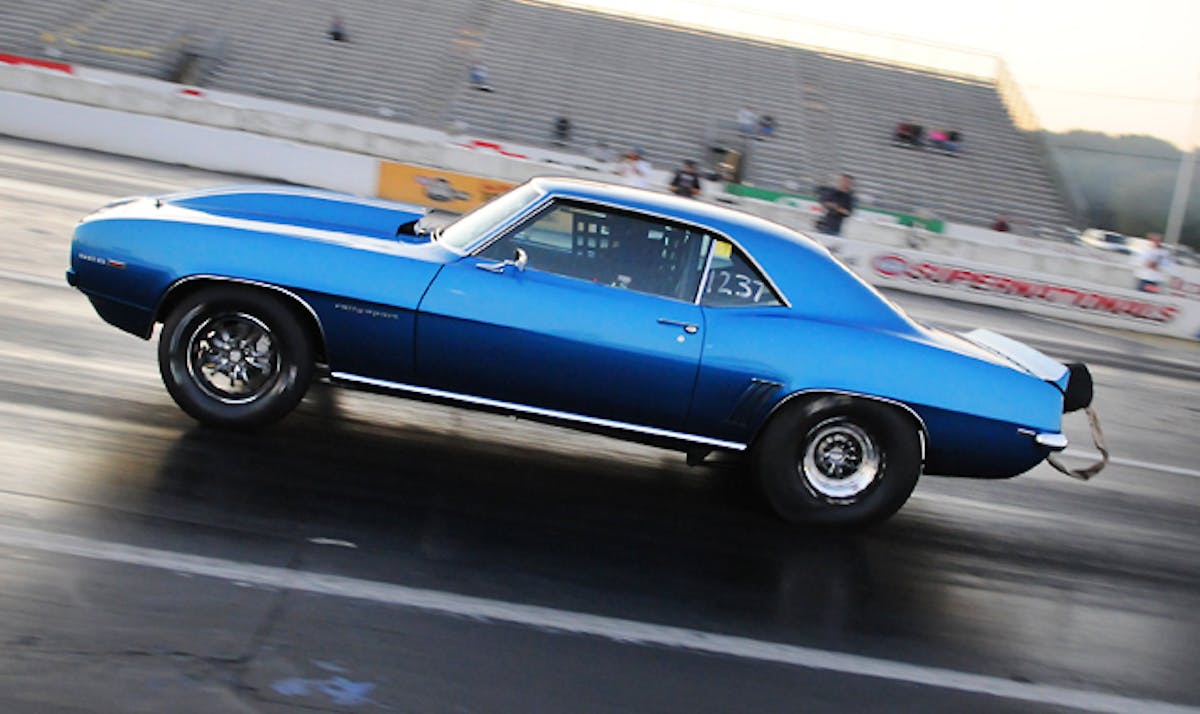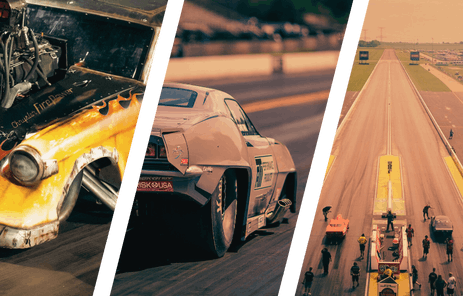Over the last three-plus decades, there have been few things more sure in the sport of drag racing than bracket racing. Created in the mid-1970’s, bracket racing was seen as an alternative to the expensive class racing that existed at the time, offering racers of every spectrum on the disposable income scale to race and be competitive. Since then, handicap racing has always been the place where the “little guy” calls home, and where the racer that went high-dollar racing settles after going belly up.

But over the last handful of years, once vibrant bracket racing programs across the country have fallen on hard times.But over the last handful of years, once vibrant bracket racing programs across the country have fallen on hard times. While certainly aided by the struggling economy and fuel prices, it seems that racers with the means to continue are simply selling out the leaving the sport or mothballing their machines in the garage. And while bracket racing has never experienced much spectator draw beyond the racers’ families, that lack of front gate money for the tracks certainly makes matters worse when car counts are half of what they once were, if that. And it’s not just the small, local tracks that are struggling, either.
8.50 Index Footage From the 2009 Shakedown at E’Town
httpv://youtu.be/yJ5jyBm-tOc
Index racing, likewise, is nothing new to the sport. But outside of NHRA and IHRA sportsman circles, this style of glorified bracket racing has gained a lot of momentum at tracks around the south and various tracks on the East Coast. And it could be the next big thing – the saving grace – of racing on a local and regional level.
Last fall, I had the opportunity to check out the 8.50 Index cars that compete up north up close and personal at the Shakedown At E’Town, and after the first couple of pairs of cars on that Friday evening, I was sold.

Delay boxes? Prohibited. Throttle stops and electric shifters? Ditto.
These weren’t your average, tube chassis, Super Gas-like race cars that always go straight and set the fans off on a yawning frenzy or on a beeline right to the concession stand. No sir.
Sure, index racing is nothing more than glorified bracket racing with equal dial-in’s, but it wasn’t the style of competition so much as how they went about it. The Shakedown rules called for tires no larger than 10.5 inches (33×10.5W), with weights of 2800 pounds for small block cars and 3000 for big blocks. Cars were required to be full bodied, street-appearing factory rear wheel drive vehicles with original front ends, back half or stock stock-type suspension modifications.
Delay boxes? Prohibited. Throttle stops and electric shifters? Ditto.
8.50 Index Footage From the 2010 Shakedown at E’Town
httpv://youtu.be/QEsEwjwR_so
Needless to say, these cars brought style points to index racing. They launched wheels to the sky, skated around the racetrack like a heads-up car, blew the tires off and tried to recover, drifted out of the groove, stayed with it, and brought the fans to their feet. They were exciting, and that’s something no one can say about Super Comp, Super Gas, and Super Street. This was heads-up small tire doorslammer racing meets bracket racing, and as much fun as it was to watch, it was probably an even bigger joy from the drivers seat.

This is exactly what many of these struggling drag strips across the country need – something that’s affordable for the racers yet fun and exciting at the same time. And more importantly, something that makes fans want to spend their hard-earned dollar to come and watch race cars that they can associate with in a format that – at least to the casual fan – looks like an all-out, heads-up drag race.
There isn’t a racetrack operator in the world that doesn’t want to see his grandstands packed, and bracket racing and a never-ending stream of four-link dragsters isn’t going to get it done.
Drag racing needs an infusion of excitement, from top to bottom. Not everyone can afford to go heads-up racing — very few can, in fact — but index racing opens up affordable possibilities to a lot of racers and brings an added level of interest to the paying spectator. Thats a win-win-win for everyone. It’s time to start thinking outside of the traditional bracket racing box., because in these times of intense competition for the dwindling entertainment dollar, drag racing at a local level isn’t offering the product that it takes to win out in the long run. This falls at the hands of everyone from the track operator/promoter to the racers themselves. Make it happen.
You might also like
Bracket Buster: Mark Dudley Jr.'s Gen 3 HEMI-Powered Duster
Mark Dudley Jr. grew his family's Mopar roots with his 1974 Duster. Mark's Plymouth is now powered by a Gen 3 HEMI.



